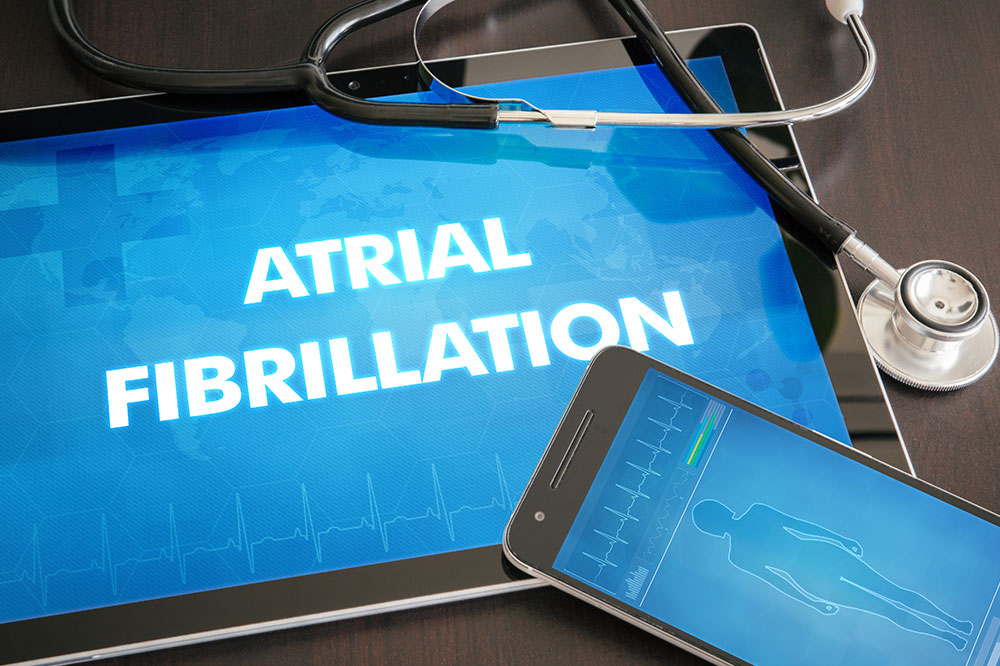
Atrial fibrillation – What it is, how its caused, and ways to manage it
Atrial fibrillation is a kind of irregular heartbeat or arrhythmia that disrupts the normal flow of blood in the body and puts one at risk of stroke. It is also called A-fib and is the most common type of arrhythmia in the world. Around 2.7 million adults in the country are estimated to have A-fib, according to the American Heart Association. In a person having A-fib, the two upper chambers of the heart, called atria or auricles, are affected.
Symptoms of atrial fibrillation
A-fib is a condition that causes one to have irregular heartbeats. This means that the heartbeat may be too slow or too fast. A healthy person’s heart rate is between 60 to 100 beats per minute. If the heart rate goes higher or much lower than this range, it is called an irregular heartbeat.
A-fib symptoms are chest pain, palpitations, shortness of breath, dizziness and confusion, fatigue, fainting, and arrhythmia during exercise. One may have these symptoms for a few minutes or even hours. If one has symptoms over many days, it indicates chronic atrial fibrillation.
Causes of atrial fibrillation
Human hearts have four chambers, two upper ones named atria and two lower ones named ventricles. When a normal person’s heart beats, the four chambers contract and relax at the same speed. In a person with A-fib, the atria contract irregularly and faster than the ventricles because of impaired electrical signals in the heart muscles.
Causes of A-fib include sleep apnea, coronary heart disease, congenital heart defects, high BP, heart valve issues, thyroid disease, use of substances such as stimulants, caffeine, tobacco, or alcohol, issues with the heart’s pacemaker, previous heart surgery, and physical stress because of surgery or diseases such as pneumonia.
Risk factors of atrial fibrillation
Here are the factors that could increase one’s risk of having A-fib:
- Cardiovascular disease
Individuals with heart diseases such as heart valve problems, congestive heart failure, coronary disease, and congenital heart disease are at a higher risk of A-fib. - Hypertension
High BP can put one at risk of developing A-fib. - Age
A-fib is more prevalent among adults aged 65 and above. - Family history
If an individual has a close relative such as a sibling, parent, or grandparent who has A-fib, the chances are that they will get it, too. - Thyroid disease
Thyroid problems can cause arrhythmia in some people. - Chronic health problems
Chronic health issues such as diabetes, kidney disease, sleep apnea, lung disease, etc., can increase one’s risk of getting A-fib. - Alcohol abuse
Alcohol abuse can trigger arrhythmia in some people. - Obesity
Those who are obese or overweight are at a higher risk of developing atrial fibrillation.
Complications due to atrial fibrillation
A-fib causes several life-threatening health problems. These include the following:
- Blood clots
Blood can collect in the heart’s atrial chambers if they are not pumping correctly. This can then cause blood clots to form. The clots can break off and travel via blood vessels to various parts of the body. These blood clots can restrict blood flow to vital organs such as the brain, lungs, kidneys, intestine, etc., and this could be fatal. - Stroke
When a blood clot blocks an artery in the brain, it reduces or stops blood flow to that part of the brain. This is called a stroke, and it results in weakness on one side of the body, vision issues, speech problems, and difficulty in moving. - Heart failure
When the heart beats irregularly, the heart muscles can get tired from beating too fast. This can cause heart failure. The amount of blood flowing between the heart’s upper and lower chambers also differs. - Cognitive issues
According to a study, atrial fibrillation puts one at an elevated risk of dementia and cognitive decline.
Diagnosis and treatment of atrial fibrillation
A-fib can be diagnosed by a doctor who will do a physical exam and check the pulse. The doctor may also do an EKG or electrocardiogram, a test that records the electrical signals of the heart. Other tests for diagnosing A-fib include an echocardiogram, chest X-ray, and blood tests.
Treatment of A-fib may involve the following:
- Doctors prescribe beta-blockers, calcium channel blockers, and blood thinners to prevent clot formation.
- They also give sodium and potassium channel blockers to normalize the heart rhythm.
- Procedures such as catheter ablation, electro cardioversion, etc., might be performed.
The doctor may also treat any underlying conditions such as sleep apnea or hyperthyroidism that are causing atrial fibrillation.
Prevention
A-fib can be prevented by avoiding substance abuse, exercising every day, making changes to one’s meal regimen, eating healthy food, and avoiding stress.
Conclusion
Atrial fibrillation is a health condition that makes the heart beat irregularly. It is common in adults aged 65 and over. A-fib can cause a stroke if left untreated. Making lifestyle changes such as eating heart-healthy food, exercising daily, and avoiding smoking and alcohol, can help prevent A-fib. If one has symptoms of atrial fibrillation, they must set up an appointment with their doctor immediately.




